Lebanon Sacred Natural Sites and Biodiversity
Did you know that Lebanon, occupying just 0.007% of the world’s land surface area, is home to an astonishing 1.11% of the world’s plant species? Not only that, but it also boasts 2.63% of reptile, bird, and mammal species. This small country in the Mediterranean basin has one of the highest densities of floral diversity in the region, with around 2,600 terrestrial plant species. Out of these, 8.5% are broadly endemic to Lebanon, Syria, and Palestine, and 3.5% are strictly endemic to Lebanon itself. However, Lebanon’s exceptional biodiversity is now under threat from various human-induced factors and climate change.
Key Takeaways
- Lebanon is home to a remarkable range of plant and animal species, including many endemic species.
- The country’s biodiversity provides essential ecosystem services and economic benefits, with the economic value of forest systems estimated at USD 131.5 million.
- Threats to Lebanon’s biodiversity include habitat loss, unsustainable resource harvest, pollution, invasive species, civil wars, and climate change.
- Conservation efforts, including the establishment of protected areas and the recognition of sacred natural sites, are being undertaken to protect Lebanon’s biodiversity.
- Community involvement is crucial for preserving Lebanon’s biodiversity and finding a balance between conservation and local practices.
The Importance of Lebanon’s Biodiversity
Lebanon is home to a rich variety of plant and animal species, making it a biodiversity hotspot in the Mediterranean region. The diverse ecosystem supports a wide range of flora and fauna, including many endemic species found nowhere else in the world.
The plant species in Lebanon are incredibly diverse, with approximately 2,600 terrestrial plant species. Of these, 8.5% are broadly endemic to Lebanon, Syria, and Palestine, while 3.5% are strictly endemic to Lebanon. This high density of floral diversity contributes to Lebanon’s unique and vibrant natural heritage within the Mediterranean basin.
Lebanon’s biodiversity extends beyond its land plants to include the marine ecosystem. The coastal waters of Lebanon host a staggering 1,790 marine species, representing almost 2.7% of the world’s total marine species. This rich marine life plays a critical role in maintaining the ecological balance of the region’s seas.
The economic value of Lebanon’s forest systems is estimated to be around USD 131.5 million. Forests contribute to the local economy through activities such as timber production, the collection of medicinal plants, and the cultivation of nuts. These natural resources provide livelihood opportunities for communities, supporting sustainable economic development.
Lebanon’s biodiversity also plays a crucial role in providing essential ecosystem services. Healthy ecosystems contribute to climate regulation, water purification, and soil fertility, benefiting both humans and wildlife. The conservation of Lebanon’s biodiversity is therefore essential for maintaining these ecosystem services and preserving the delicate balance of nature.
By recognizing the value of Lebanon’s biodiversity and the economic benefits it provides, we can promote the conservation and sustainable management of these precious natural resources. Protecting threatened fauna, preserving plant species, and conserving marine ecosystems are all critical steps in ensuring a sustainable future for Lebanon’s biodiversity.
The next section will explore the various threats facing Lebanon’s biodiversity and the conservation efforts in place to address these challenges.
Threats to Lebanon’s Biodiversity
Lebanon’s rich biodiversity faces numerous threats resulting from human activities and environmental challenges. The survival of its diverse ecosystems and unique species is at stake due to habitat loss, unsustainable resource harvest, pollution, invasive species, civil wars, and climate change.
Habitat loss is primarily driven by urbanization and agricultural expansion. As cities grow and land is converted for development, natural habitats are destroyed, leading to the displacement and loss of countless plant and animal species. Additionally, unsustainable resource harvesting, such as overfishing and deforestation, depletes essential resources and disrupts delicate ecosystems.
Pollution from agricultural activities and effluent discharge poses another significant threat. Chemical runoff from farming practices and wastewater release contaminate water bodies and impact aquatic life, endangering sensitive species and disrupting the natural balance.
The introduction of invasive species further exacerbates the challenges facing Lebanon’s biodiversity. Non-native species can outcompete native species for resources and disrupt the ecological equilibrium, leading to a decline in native populations and potential extinctions.
Civil wars have also had a devastating impact on Lebanon’s biodiversity. Armed conflicts result in habitat destruction, pollution, and the disruption of conservation efforts, forcing many species to migrate or perish in the midst of turmoil.
As with many regions, Lebanon is not immune to the effects of climate change. Rising temperatures, changing precipitation patterns, and extreme weather events pose significant challenges to biodiversity. Species that are adapted to specific climatic conditions may struggle to survive or reproduce in a rapidly changing environment, leading to population declines and reduced genetic diversity.
Reports indicate that up to 5% of Lebanese fauna is threatened, with many mammal and bird species on the brink of extinction. Urgent action is required to address these pressing threats and secure the future of Lebanon’s invaluable biodiversity.
Threats to Lebanon’s Biodiversity Overview:
| Threats | Description |
|---|---|
| Habitat Loss | Urbanization, agricultural expansion |
| Unsustainable Resource Harvest | Overfishing, deforestation |
| Pollution | Agricultural runoff, effluent discharge |
| Invasive Species | Non-native species disrupting ecosystems |
| Civil Wars | Habitat destruction, pollution, disruption of conservation efforts |
| Climate Change | Rising temperatures, extreme weather events |
Addressing these threats through conservation measures and sustainable practices is essential to protect Lebanon’s precious biodiversity for future generations.
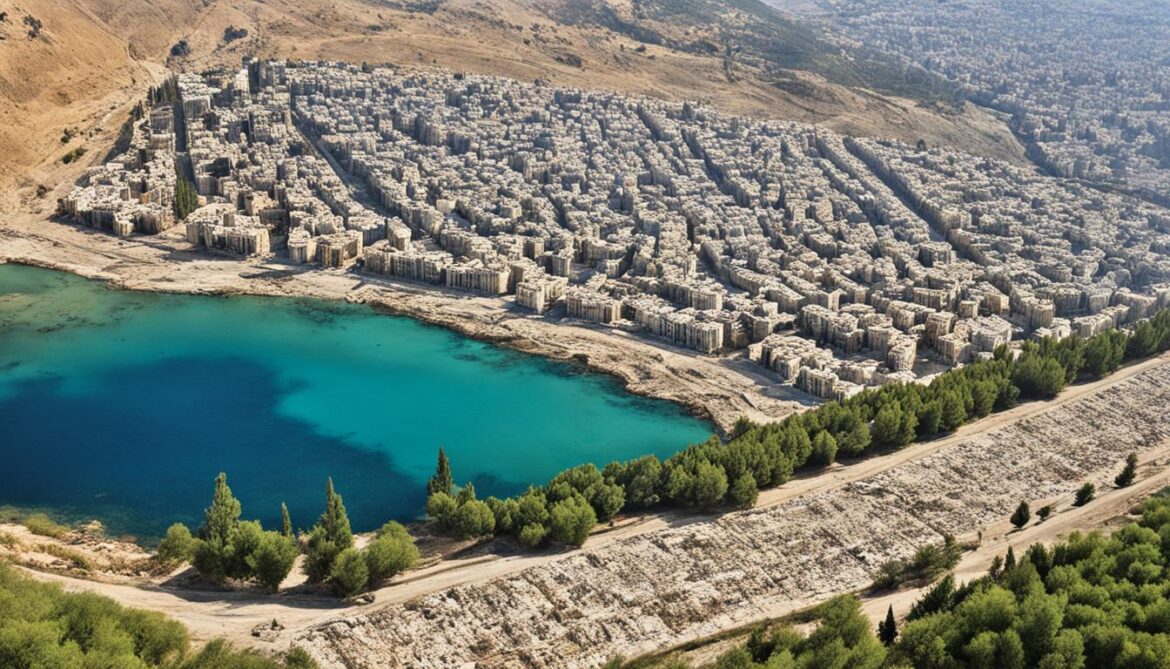
Conservation Efforts in Lebanon
Lebanon recognizes the importance of preserving its rich biodiversity and has implemented a range of conservation efforts to protect its natural heritage. These initiatives aim to safeguard important habitats, species, and cultural sites throughout the country, ensuring their long-term sustainability.
Protected Areas in Lebanon
Lebanon has established various protected areas, including nature reserves, protected forests, and protected natural sites/landscapes. These designated areas serve as sanctuaries for diverse ecosystems and play a crucial role in safeguarding Lebanon’s biodiversity.
| Type of Protected Area | Number in Lebanon |
|---|---|
| Nature Reserves | 18 |
| Protected Forests | 30 |
| Protected Natural Sites/Landscapes | 15 |
Lebanon’s protected areas not only provide habitats for a wide range of plant and animal species, but they also offer opportunities for nature-based tourism, education, and research.
Ramsar Sites, UNESCO World Heritage Sites, and Important Bird Areas
“The designation of Ramsar sites, UNESCO World Heritage Sites, and Important Bird Areas demonstrates Lebanon’s commitment to the conservation of significant ecological areas and cultural heritage.”
Lebanon is home to 4 Ramsar sites, internationally recognized wetlands that are vital for the conservation of migratory birds and other aquatic species. These sites include the Tyre Coast Nature Reserve, Palm Islands Nature Reserve, and Qaraoun Lake. They provide critical breeding, resting, and wintering grounds for various waterfowl species.
The country also boasts 5 UNESCO World Heritage Sites, including the historic city of Byblos, the ancient city of Tyre, and the Qadisha Valley. These sites reflect Lebanon’s rich cultural and historical heritage, intertwining with its diverse natural landscapes.
Additionally, Lebanon has been identified as having 15 Important Bird Areas, which are essential for the conservation of bird species and their habitats. These areas provide nesting sites, stopover points during migration, and feeding grounds for both resident and migratory bird populations.
Conservation Organizations and Collaborations
To support and strengthen conservation efforts in Lebanon, numerous organizations and collaborations have been established. These organizations work towards preservation through research, monitoring, advocacy, and community engagement.
One such organization is the Society for the Protection of Nature in Lebanon (SPNL), which focuses on the conservation of birds, biodiversity, and their habitats. SPNL collaborates with local communities, governmental bodies, and international organizations to promote sustainable development and environmental protection.
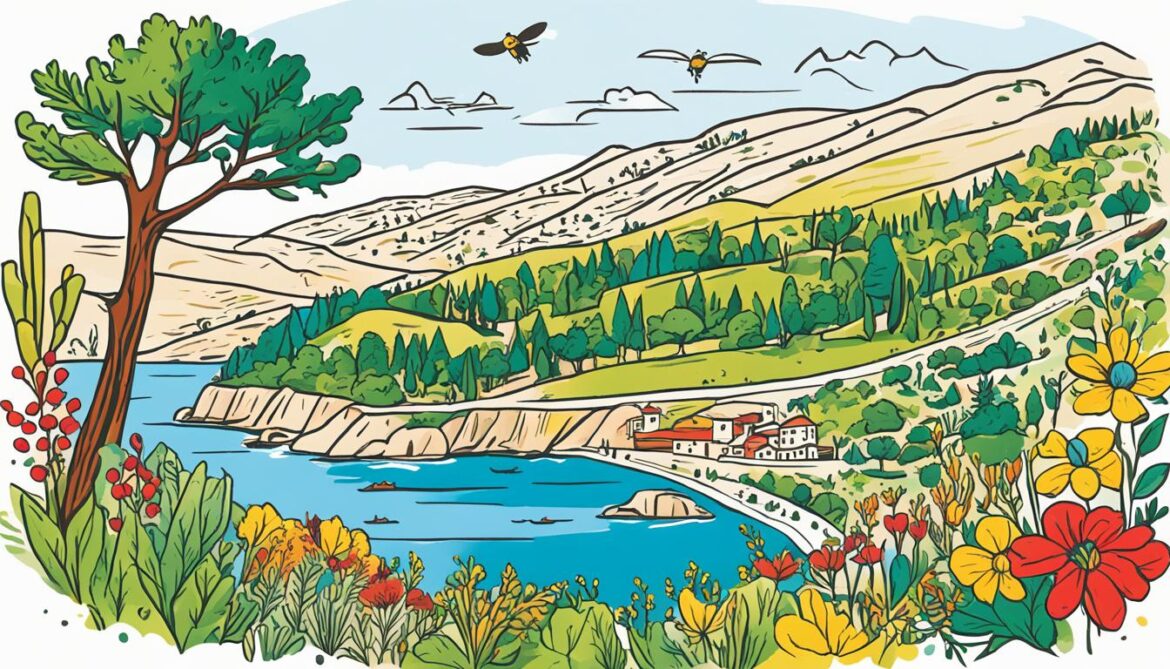
Looking Ahead: Conservation Challenges and Future Perspectives
“Safeguarding Lebanon’s biodiversity requires ongoing commitment, collaboration, and sustainable practices to ensure the preservation of its natural treasures for future generations.”
While Lebanon has made significant progress in conservation efforts, challenges remain. These include habitat loss, climate change, and the need to address unsustainable resource harvesting practices. Additionally, financial and logistical constraints pose barriers to the comprehensive management of protected areas.
However, through continued research, public awareness, and collaborative partnerships, Lebanon has the potential to overcome these challenges and create a more sustainable future for its biodiversity. By valuing and protecting its natural heritage, Lebanon can ensure the long-term health and resilience of its ecosystems while fostering socio-economic development.
Overcoming these challenges requires the active participation of local communities, conservation organizations, and government agencies working together towards a common goal of preserving Lebanon’s natural heritage.
Sacred Natural Sites in Lebanon
Sacred natural sites hold immense cultural and spiritual significance and often demonstrate positive outcomes for biodiversity. In Lebanon, these sacred sites encompass sacred groves, majestic mountains, pristine water sources, and religious buildings seamlessly integrated into natural environments. Religious authorities and local communities actively protect and manage these sites, contributing significantly to the conservation of biodiversity.
These sacred natural sites serve as refuges for a wide range of organisms, providing sanctuary for diverse plant and animal species. The presence of these sites helps maintain near-natural biotopes, creating suitable habitats for flora and fauna to thrive. By connecting communities with nature, these sites foster a profound appreciation for the environment and sustainable living.
Religious buildings, such as monasteries and temples, nestled amidst natural elements, form a unique blend of cultural heritage and biodiversity conservation. These sacred structures, often surrounded by lush vegetation, offer a serene and harmonious atmosphere, creating an ideal setting for both spirituality and ecological balance to coexist.
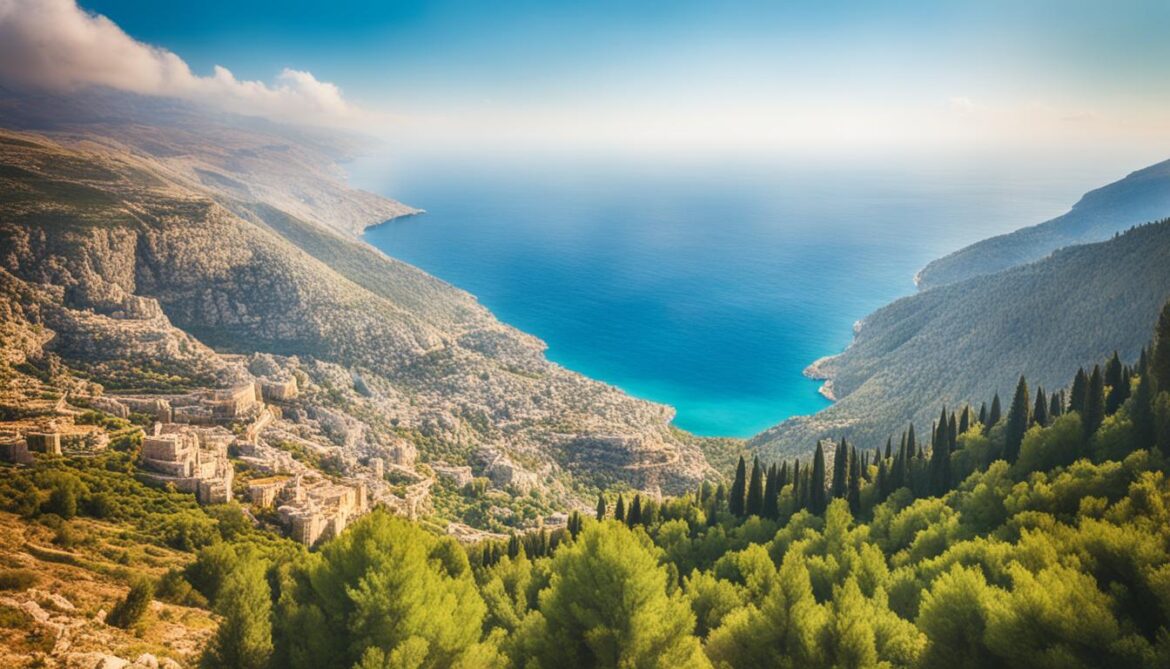
The sacred groves found within these sites are particularly captivating. These groves are home to diverse plant species, including both endemic and indigenous plants, contributing to the country’s rich floral heritage. The preservation of these groves plays a crucial role in conserving Lebanon’s natural landscape and sustaining its biodiversity.
“Sacred natural sites in Lebanon serve as bridges between societal and environmental well-being, uniting the spiritual and the natural.” – Dr. Maria El Hajj, Environmental Scientist
Biodiversity Values of Sacred Sites
The biodiversity values associated with sacred sites in Lebanon are multifaceted. The protection and conservation efforts at these sites create a positive ripple effect on surrounding ecosystems. The interdependence between spiritual beliefs and biodiversity conservation inspires local communities to actively engage in preserving these sacred natural spaces.
Preserving sacred natural sites contributes to the overall sustainability and ecological balance of Lebanon’s landscapes. These sites serve as vital ecological corridors, allowing for species migration and genetic exchange. The harmonious coexistence of religious practices and nature conservation ensures the protection of Lebanon’s unique biodiversity for future generations.
Climate Change and the Threat to Lebanon’s Cedars
Rising temperatures due to climate change pose a significant threat to Lebanon’s cedar forests. The impact of climate change on Lebanon’s biodiversity is a cause for concern. Warmer temperatures have already led to larger colonies of pests that feed on cedar trees, causing damage to the bark and potentially stunting growth. The changing climate may also make it difficult for cedar trees at lower altitudes to survive, affecting their distribution and the overall ecosystem.
One of the key concerns is the increasing danger of fires in Lebanon’s cedar forests. The combination of rising temperatures, prolonged droughts, and dry conditions creates a favorable environment for wildfires to occur. These fires not only pose a direct threat to the cedar trees but also impact the surrounding biodiversity and the delicate ecosystems they support. The destruction caused by fires can have long-lasting effects on the recovery and regeneration of Lebanon’s cedar forests.
| Impact of Climate Change on Lebanon’s Cedar Forests | Threat Level |
|---|---|
| Pest Infestations | High |
| Reduced Survival Rate at Lower Altitudes | Medium |
| Increased Risk of Fires | High |
Climate change is not the only threat facing Lebanon’s cedar forests. Mismanagement and unsustainable practices also exacerbate the risk. Illegal logging, uncontrolled grazing by livestock, and habitat fragmentation further contribute to the degradation and loss of Lebanon’s unique ecosystems.
“The threat posed by climate change and other human activities cannot be ignored. Urgent action is needed to protect and preserve Lebanon’s cedar forests for future generations.”
Efforts are being made to mitigate the impacts of climate change and address the threats facing Lebanon’s cedar forests. Reforestation and afforestation programs aim to restore degraded areas and increase the resilience of the forest ecosystem. Additionally, promoting sustainable land use practices, stricter regulations on logging and grazing, and raising awareness about the importance of biodiversity conservation are crucial for the long-term survival of Lebanon’s cedar forests.

Preserving Lebanon’s natural heritage requires collective action at local, national, and international levels. The preservation of Lebanon’s cedar forests is not only essential for biodiversity but also for the cultural and economic well-being of the country. Protecting these ancient trees and their ecosystems is vital to safeguarding Lebanon’s unique natural treasures for generations to come.
Mitigating Climate Change Impacts
Local priests and environmental activists in Lebanon understand the urgency of addressing the impacts of climate change on biodiversity. To gain a comprehensive understanding of the temperature changes and their specific effects on Lebanon’s diverse ecosystems, a study focused on this issue has been proposed. This study aims to provide essential insights into the vulnerabilities and necessary mitigation strategies to safeguard Lebanon’s rich biodiversity.
However, the undertaking of such a study faces significant challenges due to Lebanon’s economic crisis and limited resources. The financial constraints make it difficult to allocate the necessary funds and expertise needed to conduct the comprehensive research effectively. In spite of these challenges, the importance of this study cannot be understated, as it will help guide conservation efforts and inform future policies to mitigate climate change impacts on Lebanon’s biodiversity.
Conservation initiatives play a vital role in mitigating climate change impacts in Lebanon. These initiatives rely on community support and also receive funding from Lebanese diasporas abroad, who recognize the importance of preserving their country’s natural heritage. The funds received enable the implementation of various measures aimed at protecting the cedar forests and the iconic Kadisha Valley, ensuring their resilience against the changing climate.
One of the essential strategies employed is the use of sensors to monitor forest conditions, which helps track changes in temperature, humidity, and other environmental factors. This information is critical for identifying areas that are most vulnerable to climate change impacts and devising targeted conservation and management strategies.
“Our collective efforts to mitigate climate change impacts on Lebanon’s biodiversity are guided by a commitment to preserve the natural treasures of our country for future generations.”
The conservation initiatives also include the implementation of strict regulations to protect the cedar forests from illegal logging and other detrimental activities. These regulations aim to ensure the sustainable management of Lebanon’s natural resources while safeguarding the ecological integrity of these vital habitats.
The involvement of local communities is crucial in the successful implementation of these conservation efforts. Through awareness campaigns and community engagement programs, individuals are empowered to take an active role in protecting their environment. Emphasizing the importance of sustainable practices, such as responsible tourism and conservation-compatible livelihoods, helps foster a sense of ownership and responsibility among the local population.
In conclusion, mitigating the impacts of climate change on Lebanon’s biodiversity requires comprehensive studies, conservation initiatives, and community involvement. Despite the economic challenges faced by the country, efforts are being made to secure funding and support from both local and international sources. Through research, monitoring, and collaboration, Lebanon aims to preserve its rich biodiversity and protect its natural heritage amidst the rapidly changing climate.
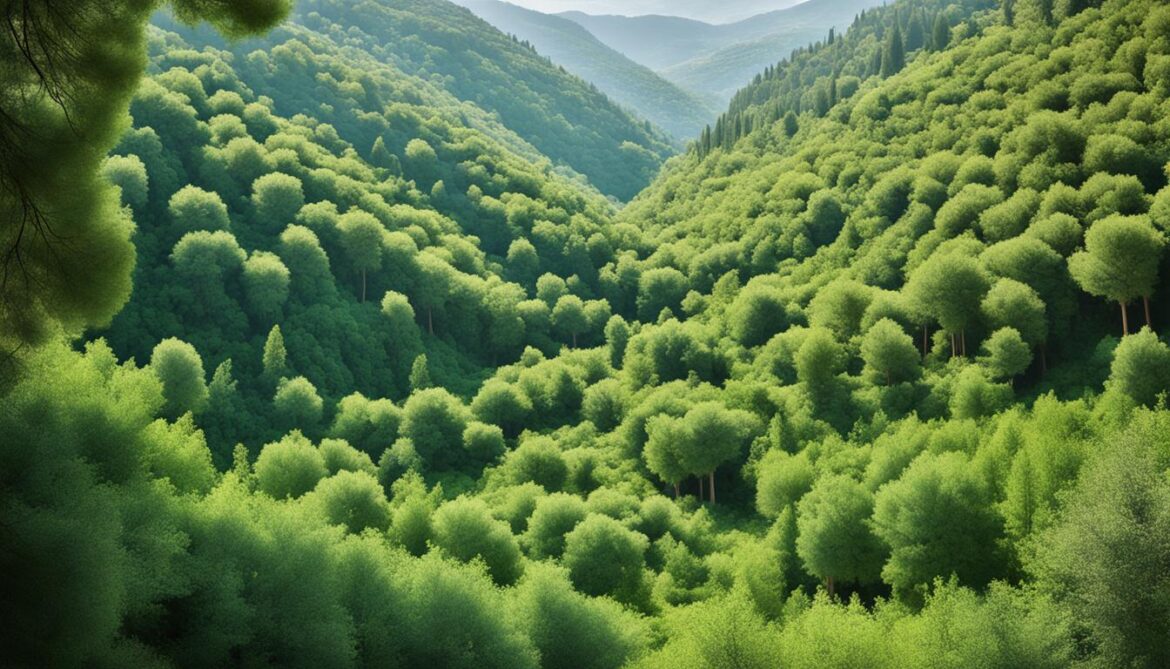
The Importance of Community Involvement in Conservation
Community involvement plays a vital role in the conservation of Lebanon’s biodiversity. Local communities have a deep understanding of their ecosystems and the practices that have sustained them for generations. Traditional practices, such as grazing by herders and collecting deadwood for fuel, have proven to be effective in ecosystem management and fire prevention.
The implementation of strict regulations in protected areas, however, has limited these practices, leading to imbalances in the ecosystem. It is essential to find a balance between conservation objectives and the involvement of local communities to ensure the long-term preservation of Lebanon’s biodiversity.
By actively engaging local communities, we can harness their knowledge and expertise to develop sustainable conservation strategies. Their participation in decision-making processes and on-the-ground initiatives promotes a sense of ownership and responsibility for the land and its resources.
Community involvement is not just about protecting the environment; it is about nurturing a sense of stewardship and building a sustainable future for generations to come.
Grazing practices, when managed responsibly, can help maintain the health and diversity of ecosystems. Controlled grazing can prevent the overgrowth of vegetation, ensuring a healthy balance between flora and fauna. It also supports the regeneration of plant species and provides habitat for a variety of wildlife.
In addition to grazing practices, local communities play a crucial role in fire prevention. Their knowledge of the land and its seasonal patterns can help identify the risks associated with wildfires and implement proactive measures to mitigate them.
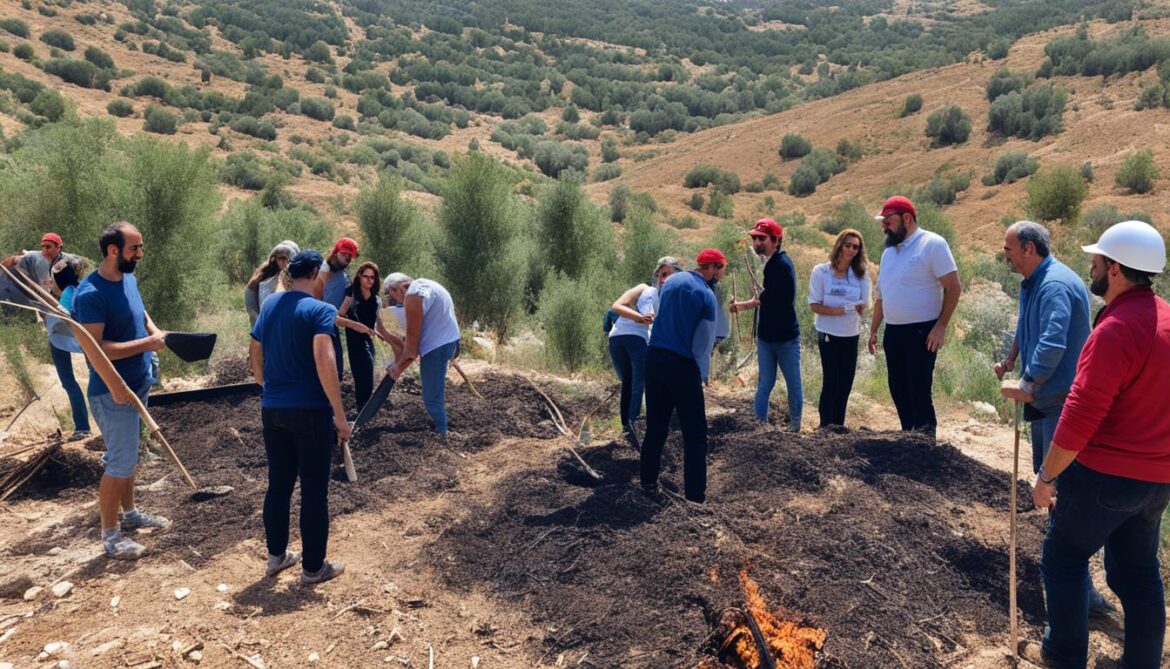
The Power of Collaboration
Conserving biodiversity requires a collaborative effort involving various stakeholders, including government agencies, NGOs, and local communities. Engaging communities in decision-making and conservation efforts fosters a sense of ownership and ensures that strategies are culturally appropriate and sustainable in the long run.
Their involvement can also help address social and economic challenges. Through sustainable practices, local communities can generate income from eco-tourism and the responsible use of natural resources, creating economic incentives for conservation.
Case Study: The role of local communities in protecting Lebanon’s biodiversity
| Community Initiative | Location | Description |
|---|---|---|
| The Tannourine Cedars Forest Nature Reserve | Tannourine, Lebanon | The local community actively participates in the management of the reserve, conducting patrols to prevent illegal logging and raising awareness about the importance of preserving the cedars. |
| Jezzine-Jbayl Hima | Jezzine, Lebanon | Local communities are engaged in sustainable agriculture practices and the protection of natural resources, benefitting both their livelihoods and the environment. |
| Hima Anjar-Kfar Zabad | Anjar, Lebanon | The community-led initiative focuses on sustainable land and water management, enhancing biodiversity and ecological resilience in the region. |
These case studies demonstrate the positive impact of community involvement in biodiversity conservation. By empowering local communities and recognizing their role as custodians of the land, we can build a sustainable future and protect Lebanon’s natural treasures for generations to come.
Conclusion
Preserving Lebanon’s sacred natural sites and biodiversity is crucial for the country’s cultural heritage, ecosystem health, and the well-being of communities. The rich biodiversity found in Lebanon, with its diverse plant and animal species, provides important ecosystem services and economic benefits. However, human activities and climate change pose significant threats to Lebanon’s biodiversity.
Fortunately, conservation efforts and community involvement offer hope for the preservation and sustainable management of Lebanon’s natural treasures. The establishment of protected areas, such as nature reserves and protected forests, and the recognition of sacred sites are steps in the right direction. These initiatives aim to protect and preserve important habitats, species, and cultural heritage in Lebanon.
However, in order to ensure the long-term survival of Lebanon’s biodiversity, continued research, funding, and collaboration are needed. Comprehensive studies on temperature changes and their impact on biodiversity are crucial, but require resources that are currently limited due to the economic crisis. Therefore, it is important to rally support from both local communities and Lebanese diasporas abroad to secure the necessary funding for conservation initiatives.
By prioritizing the preservation of Lebanon’s sacred natural sites and biodiversity, we can safeguard the country’s cultural and ecological heritage for future generations. Together, by taking action and raising awareness, we can contribute to the conservation of Lebanon’s natural treasures and the importance of biodiversity preservation.




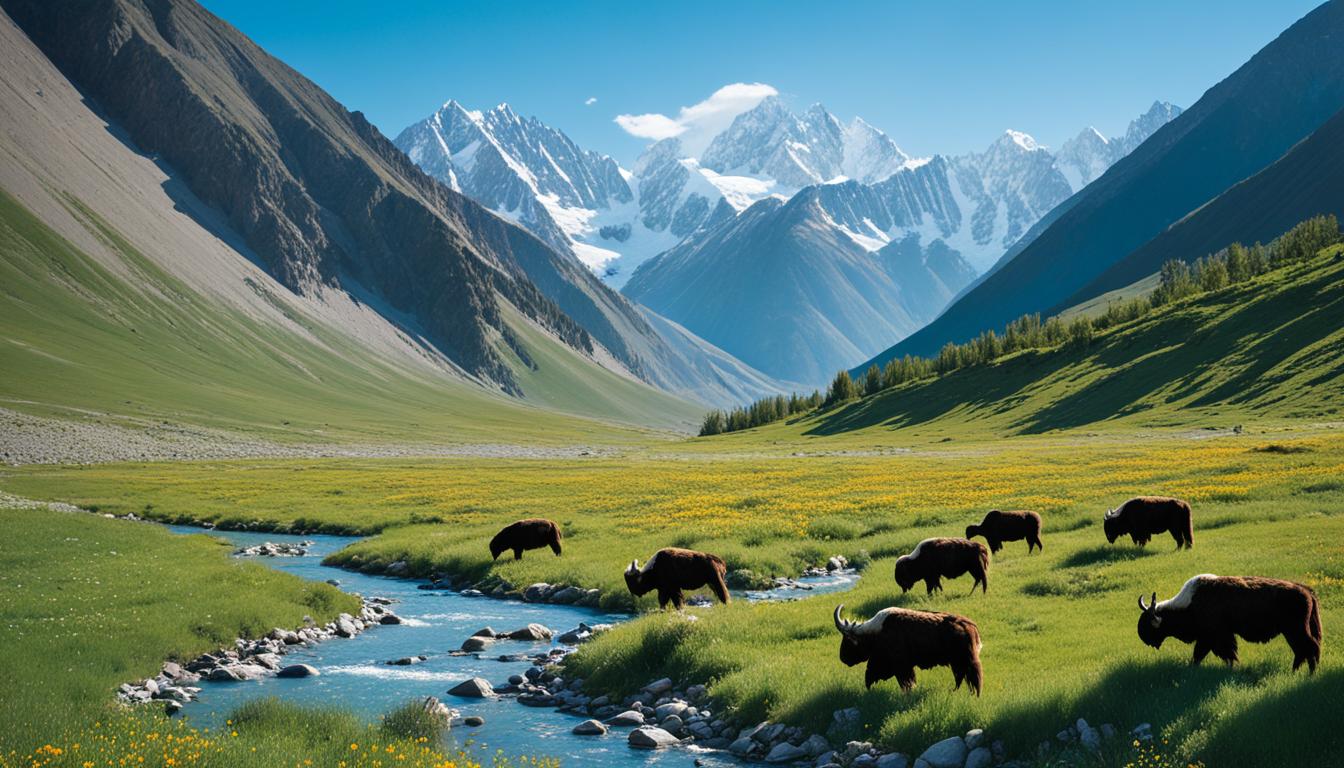


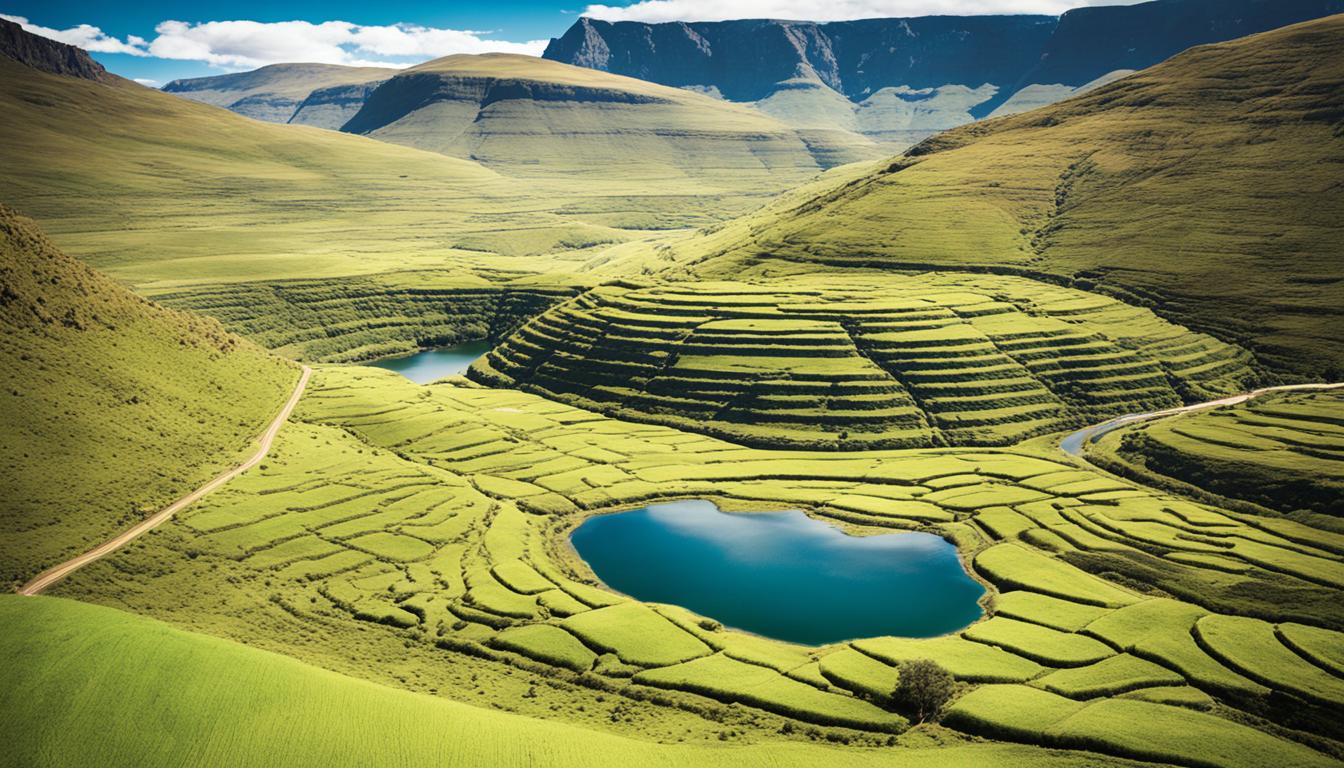

Syria Sacred Natural Sites and Biodiversity
1 year ago[…] https://constructive-voices.com/lebanon-sacred-natural-sites-and-biodiversity/ […]